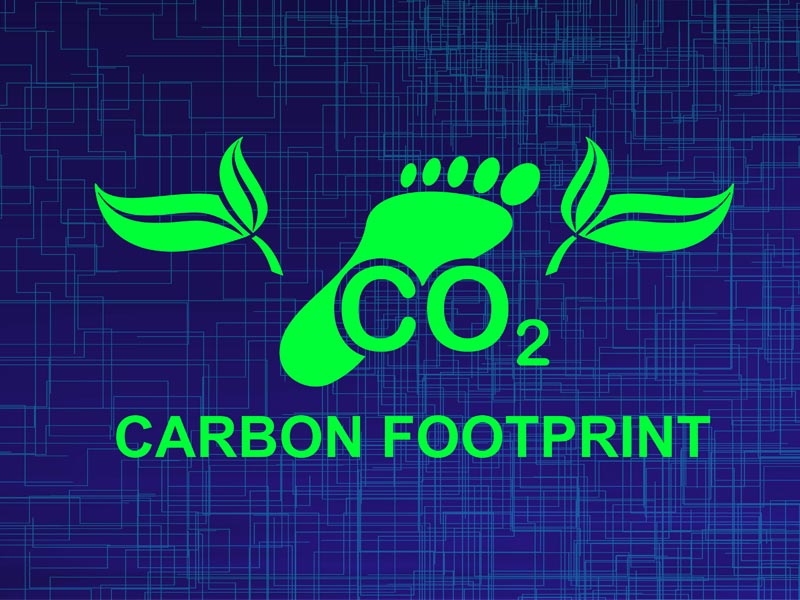It's not a fad, it's a new reality. More and more entrepreneurs are thinking about calculating their carbon footprint, a large part of them have already calculated it. The authorities of the European Union maintain that the hitherto ad hoc actions are being transformed into an obligation that will spread to more and more enterprises and institutions.
We are convinced that the time of polemics about whether climate change is really a real problem is over. We are noticing that the climate is changing! Now is the time to take concrete steps to solve the problem.
If we do not start reducing individual emissions now, life on our planet will change irrevocably - our reality will change drastically, and our children will not get to know the world with which we and our ancestors interacted every day.

Actions in the field of reducing carbon and environmental footprint emissions should start with ourselves. It is extremely important to involve organizations and institutions with which we cooperate or coexist on a daily basis: the city where we live or where we come from, the company we own or work for, the school we are a student or teacher, the organization of which we are a member, and even neighbors and friends whom we meet on a daily basis or on special occasions.
This topic has been on the agenda in Western Europe for some time now, where carbon footprint reporting is sometimes a legal obligation.
With the passage of time, the topic is becoming louder and louder in our country as well.
The carbon footprint of a product or company is starting to play an increasingly important role and is a new indicator taken into account when selecting suppliers or partners.
In May 2021, Steward Redqueen developed guidelines to be used for reporting through the ESG indicator. ESG is intended to be a guide for companies listed on the Warsaw Stock Exchange (Warsaw Stock Exchange). The study contains information on the most important criteria (indicators). In terms of greenhouse gas emissions, the basic one is the total sum of direct and indirect greenhouse gas emissions (scope 1, 2 and 3).
Implementation in the topic and convincing the interlocutors: business partners (both suppliers and customers) or consumers or shareholders about the company's commitment to environmental protection is not easy!
It forces the speaker to present effectively (in a simple and understandable way for interlocutors) the level of greenhouse gas emissions and convincing interlocutors to the developed emission reduction strategy.
carbon footprint is the result of calculating the total sum of greenhouse gas emissions that have been generated during the full duration = life cycle entity that may be company, institution, product, service, event, e.g. conference, plane trip, city, country, private person.
The generally known standard for calculating the level of carbon footprint for companies is Greenhouse Gas Protocol.
Most companies use the GHG Protocol directly or indirectly through methodologies based on this protocol when calculating their Carbon Footprint.

The Directive of the European Parliament and of the Council of 26 June 2013 on annual financial statements, consolidated financial statements and related statements of certain types of entities slightly changed the way of looking at the carbon footprint in relation to the previously applicable regulations.
She imposed, among others the obligation to prepare an additional report on activities or a consolidated report on activities by capital companies, limited joint-stock partnerships, mutual insurance companies, mutual reinsurance companies, cooperatives and state-owned enterprises, which is a supplement to the financial statements.
The report of the European Parliament suggests that the previously adopted scope of data to be included in the activity report should be enriched with information on greenhouse gas emissions (GHG emissions).. greenhouse gases, GHG) showing the emission in the form of specifying ranges 1, 2, 3 and providing the results of the implemented activities referring to the climate objectives of the European Union.
managing their own climate impact - so that they measure it and inform their contractors, supervisors, society and competitors about it.
continuously investigate whether they affect the climate in any way and take steps to minimize negative impacts, if any, by reducing greenhouse gas emissions.
These types of actions are needed to slow down the pace of increasing global warming, which is already affecting society and the economy.
We should support the implementation of EU community goals in this area - only comprehensive actions of the majority of society will make it possible reduction of greenhouse gas emissions.
These are the emissions that:
- stationary, e.g. natural gas for building insulation,
and/ or
– mobile, e.g. gasoline in the company’s car fleet,
owned or controlled by the company,
They have been generated Consequently imported (purchased or externally supplied) electricity, heat, process steam or cold.
They have been generated throughout the enterprise chain, for example:
It should be remembered that each subsequent calculation of the carbon footprint is a unique process. Each company, organization or institution is characterized by an individual structure, ongoing processes and unique characteristics of activity, and the calculation of the carbon footprint is based on this uniqueness. It is simply impossible to create a comprehensive, suitable for every type of business, calculator (with the above-mentioned assumptions reflecting the realities). For this reason, we apply an individual approach to each considered issue.
Taking specific steps becomes a real expectation of customers and investors, and therefore the company decides to calculate and disclose the overall result of its carbon footprint. He also treats it as a marketing ploy or part of the company's mission, and sometimes a corporate ethics strategy.
just for the enterprise idea and at the same time an introduction to more efficient management energy and use of other resources.
There is a conviction that:
Therefore, when running a business, it is important to consider where the fuel for the production of purchased energy came from, how energy-intensive it is to obtain raw materials for production.
Due to the fact that the trends prevailing in the European Union are evolving towards conducting business in an increasingly low-emission and climate change-resistant manner, adaptation to new requirements very often forces the reconstruction of the management method and the implementation of substantial investments.
Investments in new processes and technologies are a way to meet the ever-increasing requirements or energy efficiency, while maintaining competitiveness.
It should be expected that in the near future the question about the carbon footprint will become a serious criterion when selecting a contractor for cooperation.
In order to provide the possibility of comparing and testing the reliability of data included in reports prepared by entities from all over the world, an organization was established about 20 years ago Carbon Disclosure Project.
It runs a system of voluntary reporting of companies' environmental impact, while controlling the data sent by enterprises.
Currently, about 10.000 companies from around the world submit reports to CDP (including about 2500 reports from Europe). More and more institutions are interested in accessing reliable, comparable reports containing data on climate issues. The CDP platform, according to many sources, is a reservoir of valuable data.

The material is for information purposes only and is not an interpretation of the law. Due to possible changes in applicable law, all information provided should be verified and checked for validity.